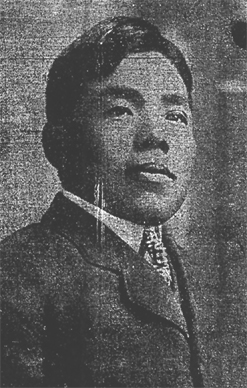
A theater production coming to Anchorage this week honors the accomplishments of a little known character in Alaska’s history.
Back around the turn of the twentieth century, one of the foremost dog drivers in Alaska was Jujiro Wada, a Japanese national who helped to blaze Alaska’s most famous trail.
If you mention the word Iditarod, images of racing huskies, dogsleds and the last of the Alaska mountain men come to mind. Swenson, Buser, Seavey, Mackey are names that carved Iditarod history. But Jujiro Wada? Who’s he? Well, he’s the man who built the Iditarod Trail.
University of Alaska professor and Seward native Edgar Blatchford says Wada faced incredible odds.
“It wasn’t like he had GPS or any food along the way. He carried a rifle, bullets and an empty sled, except for something to sleep in.”
Blatchford is helping the Asian American Cultural Center bring the musical “Samurai Musher” to Alaska. Back in 1909 Wada was renowned in what was to become the Alaska Territory, and his exploits were covered in newspapers of the time.
“The Seward Chamber of Commerce, it was called the Board of Trade at that time, hired him to find a way to connect Seward to the gold camps in the Interior and eventually Nome. Jujiro Wada was hired at a dollar a day, and he hired what we like to think of as an international crew. And they set forward to blaze the trial from Seward to Nome.”
Why Wada? Because he was considered the foremost musher in Alaska at the time.
“Wada was credited from mushing forty to fifty thousand miles across Alaska,” says University of Alaska professor Tony Nakazawa.
Nakazawa says Wada came from Hinodemachi in Ehime Prefecture. He was born in 1875 into a samurai family down on its luck, and left home early to seek his fortune in the U.S. He first arrived in San Francisco.
“One of the stories that is more prominent is that he was shanghaid by this Captain Norwood on the ship Ballena, and they were up in the Arctic waters, and their ship became icebound. And so Captain Norwood had Wada and a small group go on to shore and there he befriended the Brower family who mobilized the village and they came out and saved the people on the ship.”
Wada first worked at the Cape Smyth Trading post with the legendary Charles Brower. It is was there that he learned his dog mushing skills. Later, he traveled with E.T. Barnette, the man who founded Fairbanks, and did his share of gold prospecting.
He was a man of many talents — sailor, prospector, dog driver, and quite the adventurer. He was driven by the desire to make his fortune and send money back to his widowed mother in Japan.
A 1995 book published in Japan, “The Samurai Dog Musher Under the Northern Lights,” is credited with spurring interest in Wada in that country.
The book was later translated into English by a Canadian who was documenting Wada’s travels for the Canadian Park Service.
Now the Mikan Ichiza Playgroup, from Wada’s hometown in Ehime Prefecture, has produced a musical based on Wada’s story
Nakazawa says the story captures public imagination in part because of its theme of mother and son devotion.
“And there is a following among historians here in Alaska on Wada, but in terms of the communities, I don’t think it’s very well known. But one of the things that’s interesting about the Wada story is it was actually that he had written to his mother, sent money back to his mother from a distance.”
Wada’s fortunes did not always run smoothly. Nakazawa says Wada was once almost lynched because of a misunderstanding.
“So one of the [newspaper] articles that we looked at had said that Wada was sent to much to Circle and Dawson City to build up Felix Pedro’s gold strike, and up to one thousand prospectors came to the Goldstream Valley area, and unfortunately, they didn’t find gold, as promised. And Wada almost met his demise, but fortunately, Mr. Barnett prevailed and Wada was spared.”
And, as World War I loomed, Wada was faced with discrimination because of mistrust of the Japanese in the US.
The stage production covers the triumphs and disappointments of Wada’s life from childhood in Japan to his adventures in Alaska, and through his declining years.
Edgar Blatchford says Wada’s story is exactly the kind of thing that fascinates tourists who are looking for something beyond the usual attractions.
“This is a major production. They are excited about it. They’ve put a lot of time into it. They are serious performers, and they recognize the connection between Japan and Alaska which gives Alaska great avenue for more and more people from Japan coming to visit Alaska and getting off the beaten path.”
Wada eventually left Alaska. His later life is obscure, but we know he died in San Diego without ever having struck it rich. But the growing interest in his life is sure to enrich his memory in Japan and Alaska.
